The Spatial Ecology of the Reef Manta Ray (Manta alfredi) in the Maldives
2018
Joanna Harris (BSc (Hon) Applied Marine Zoology - University of Plymouth)
Keywords: AICc • Information Theoretic • Prediction Model • Elasmobranch • Indian Ocean • Maldives Manta Conservation Programme

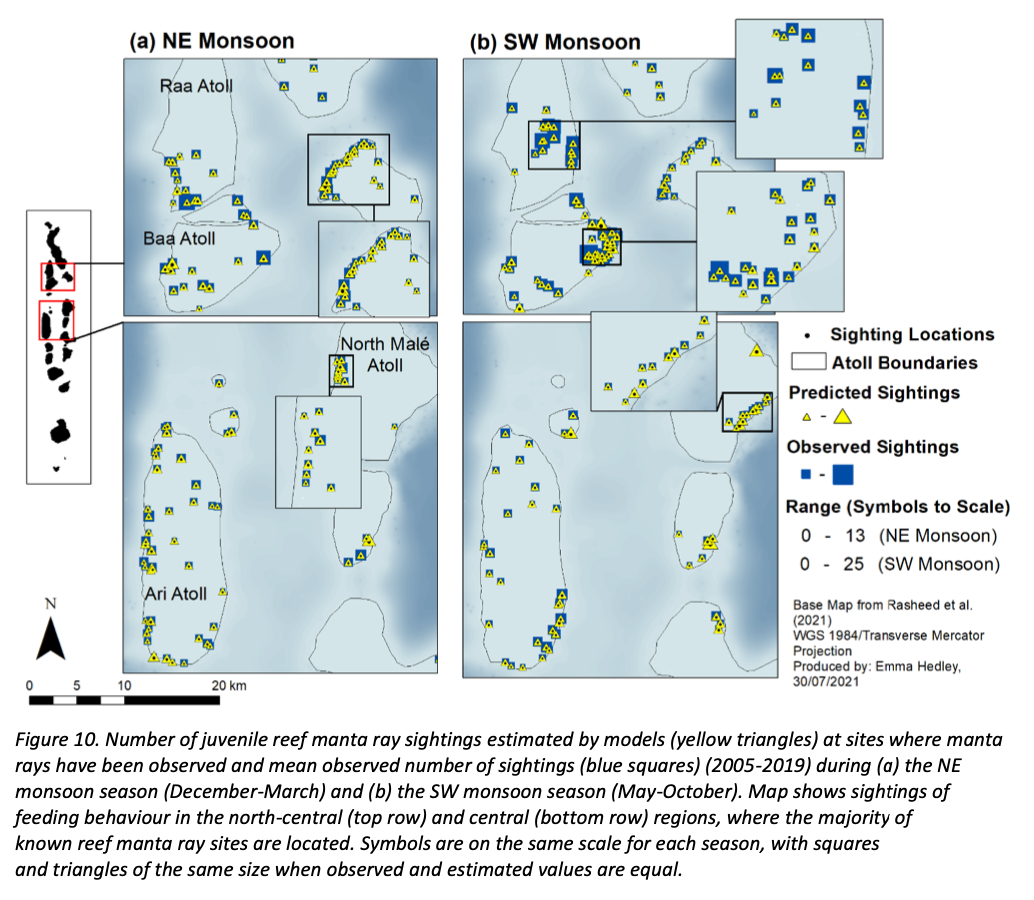
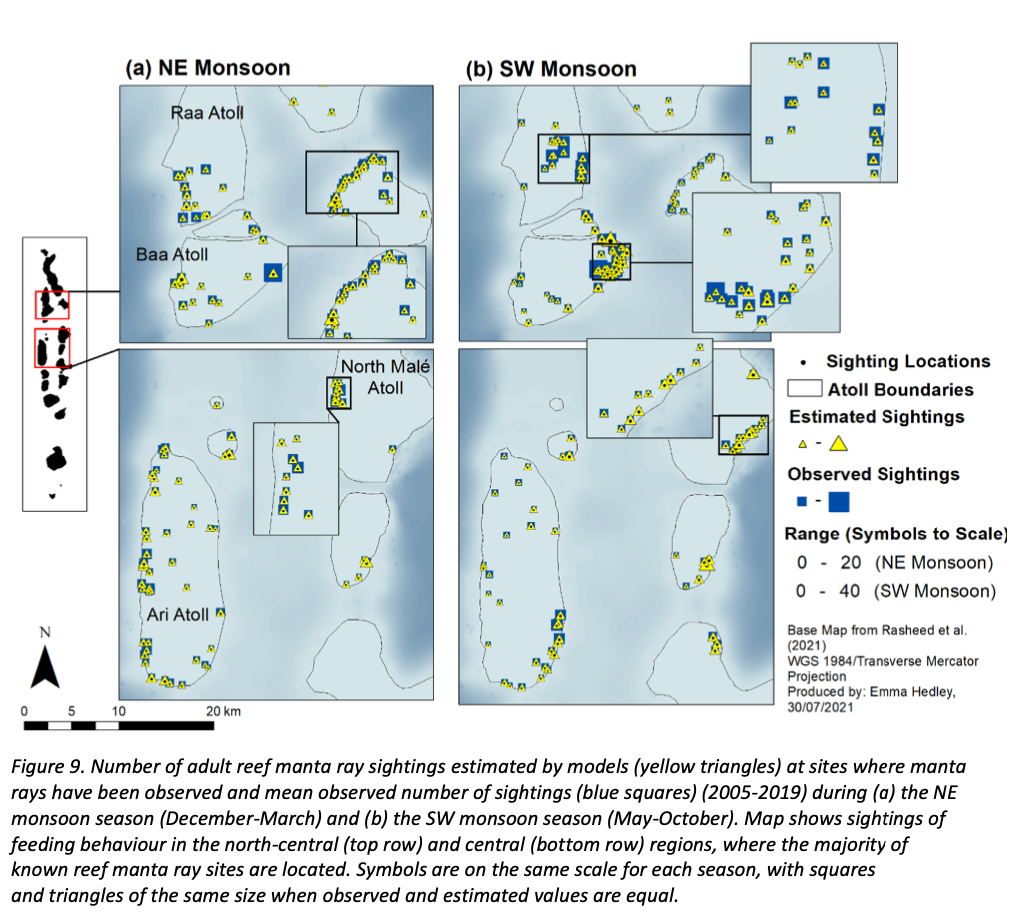
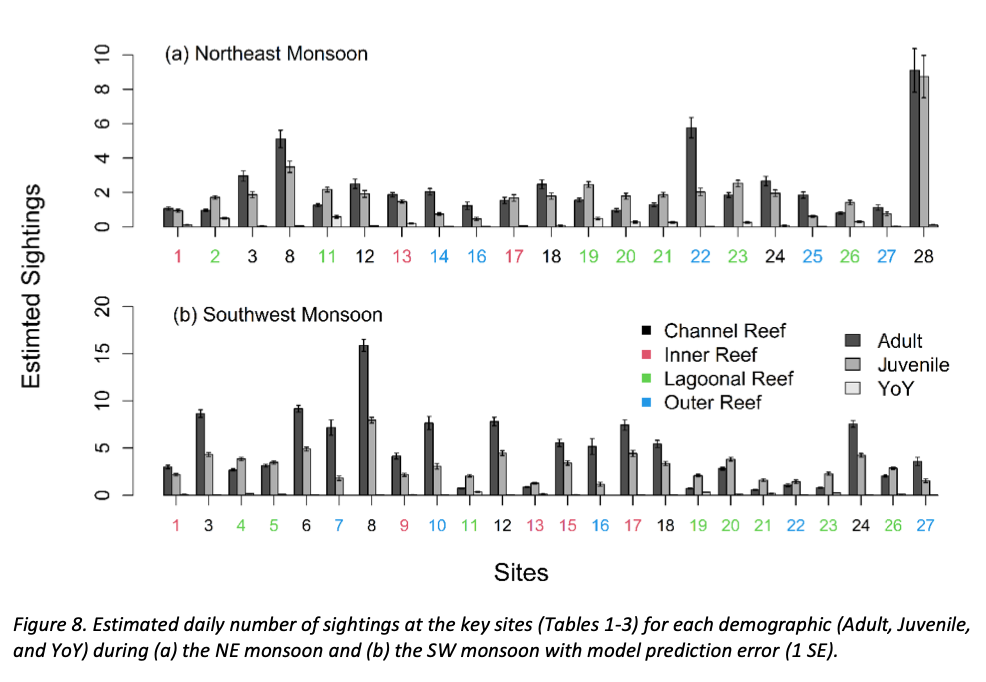
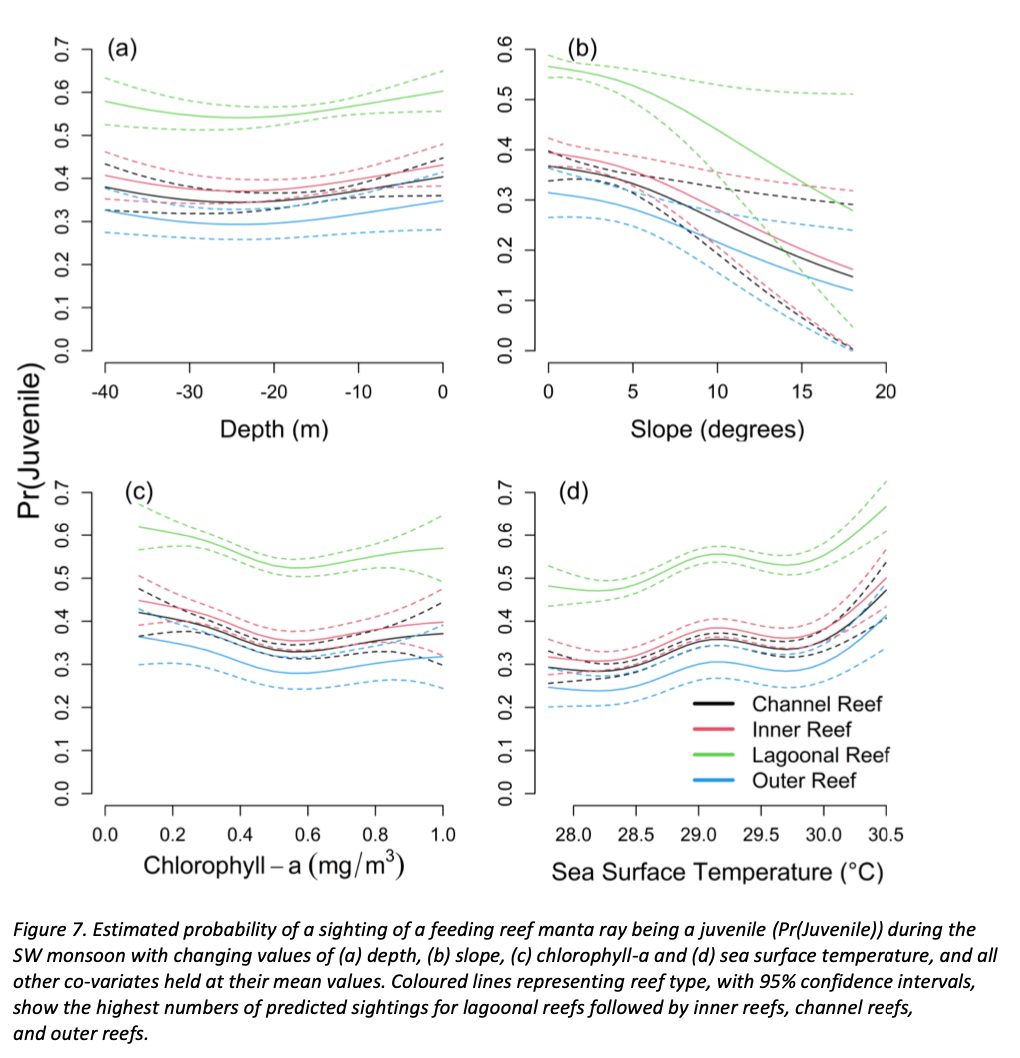

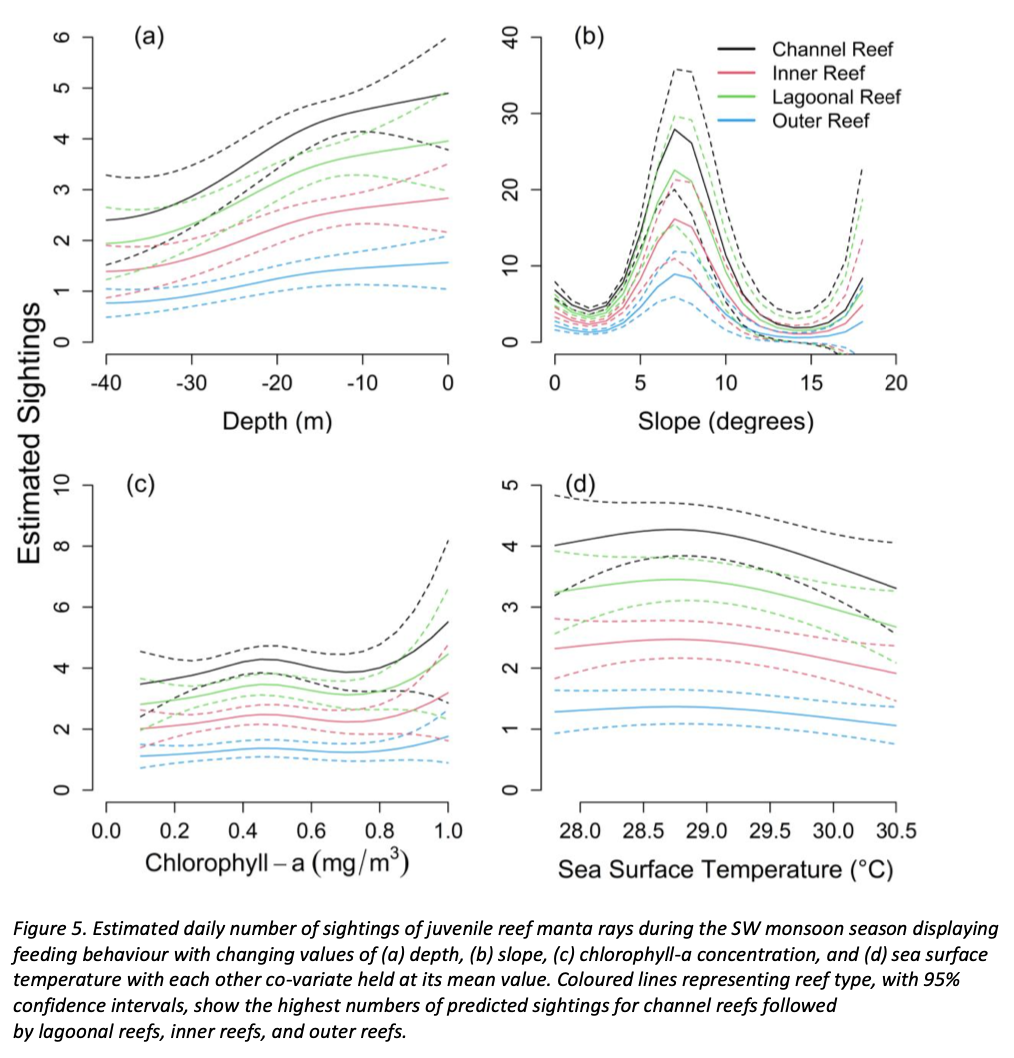
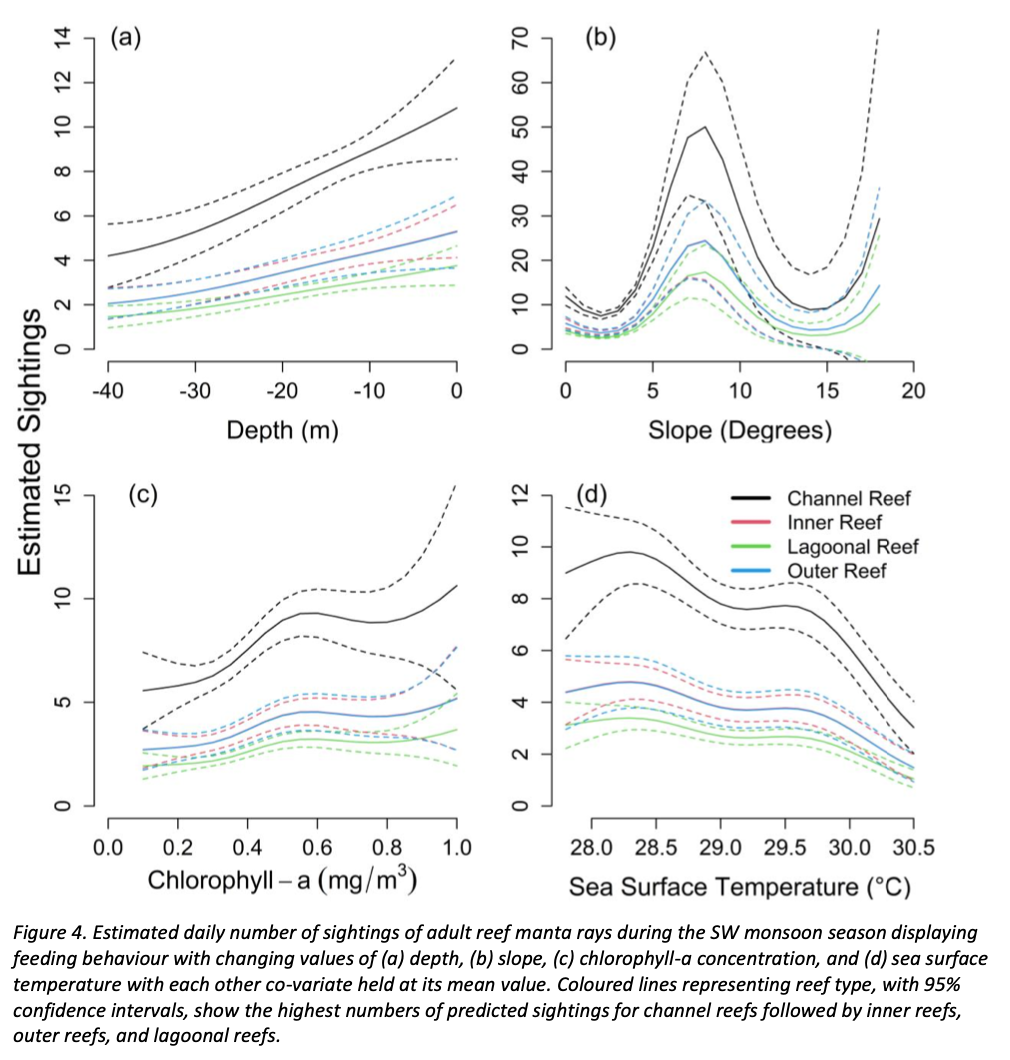
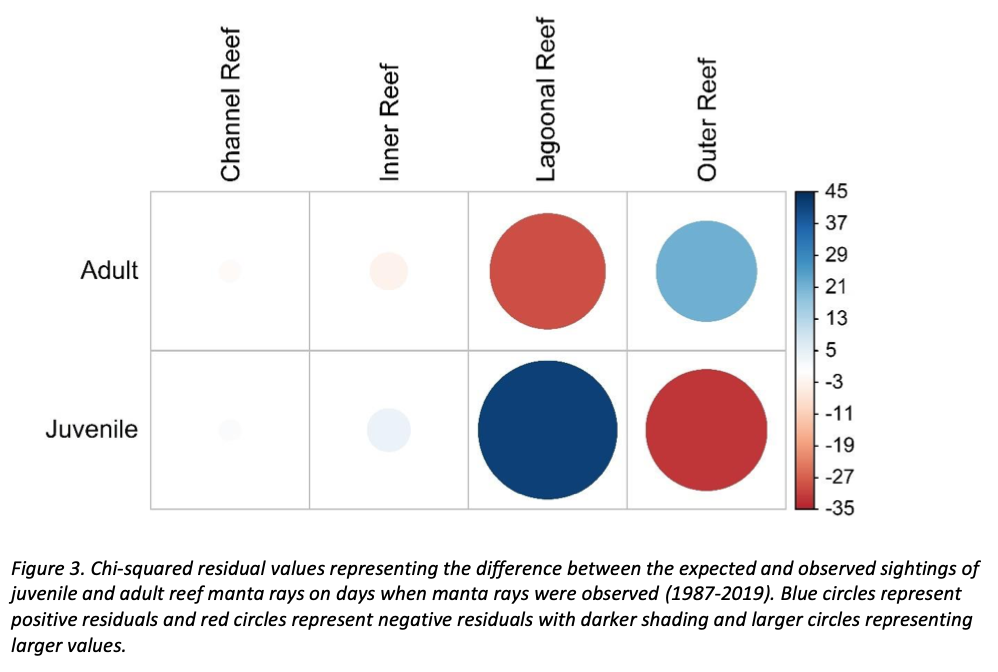
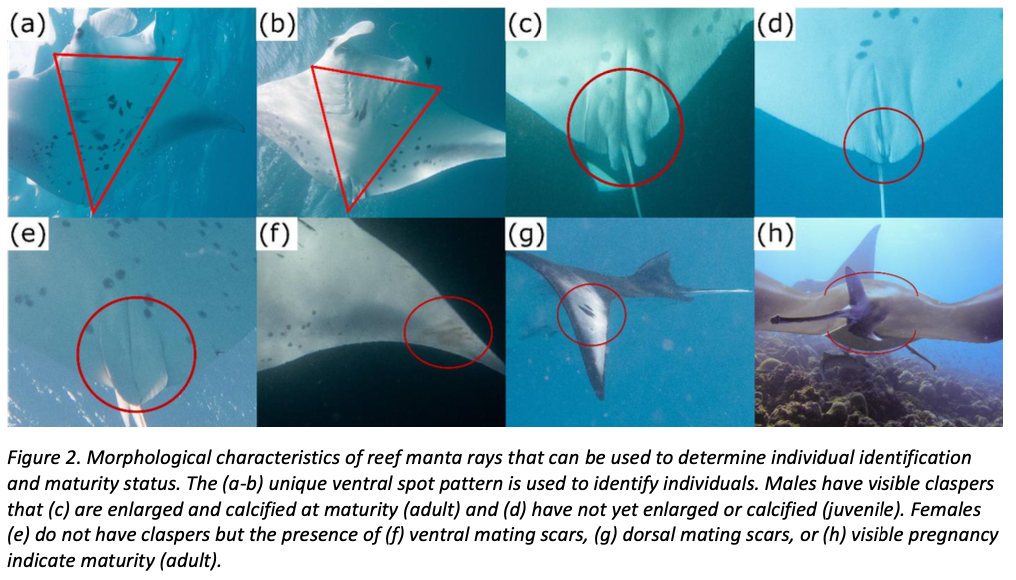
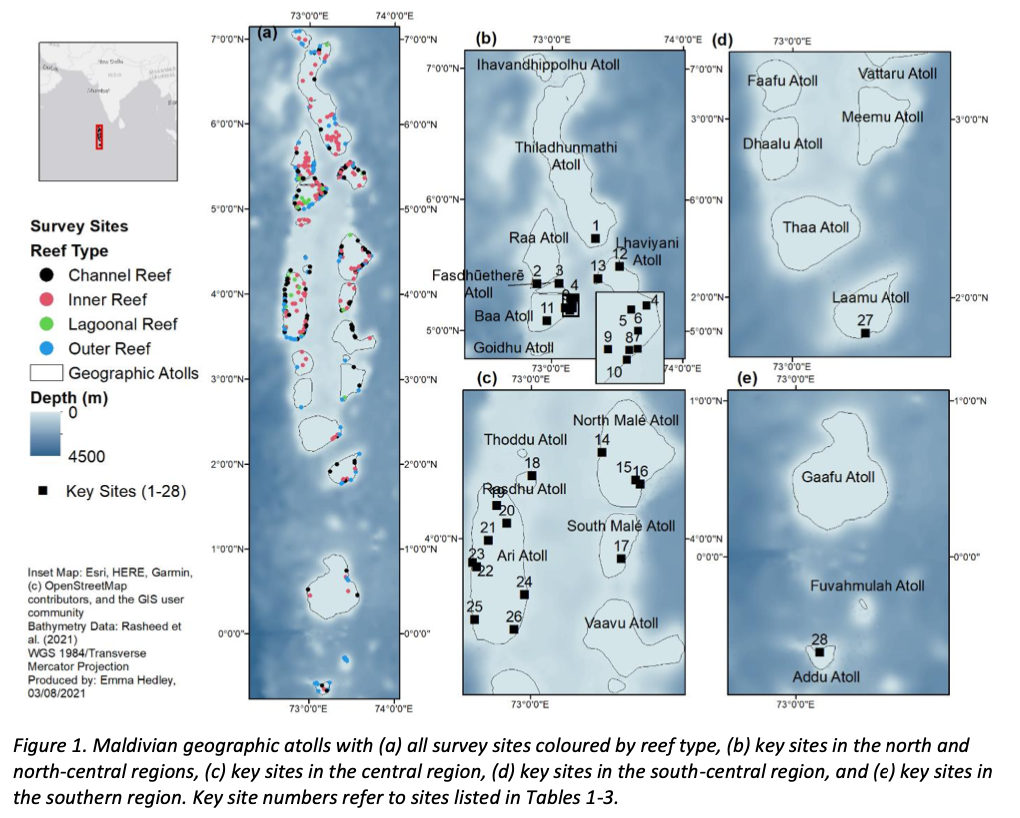
Summary: Reef manta rays (Mobula alfredi) in the Maldives face threats from human activities and are vital to the tourism industry. To protect them, the government is expanding marine protected areas. This study analysed sightings of adult, juvenile, and young reef manta rays from 1987 to 2019. Environmental factors like chlorophyll-a and sea surface temperature influenced sightings. Juvenile manta rays preferred lagoonal reefs as nursery areas, prioritising predator avoidance. Focusing on sites with more sightings can conserve the species, especially by safeguarding lagoonal reefs for juvenile survival and reproduction.
Abstract
“Reef manta rays (Mobula alfredi) in the Maldives play an important role in the large tourism sector but are vulnerable to anthropogenic threats such as boat strike, fisheries bycatch, and unsustainable tourism. Increasing pressure on the marine environment and a global commitment to protect 30% of national waters by 2030 have spurred the government to expand their network of marine protected areas (MPAs), prioritising the protection of vulnerable and valuable species. Reef manta rays are late to mature and slow to reproduce, making juvenile survival critical to overall population health. This study used sightings of adult, juvenile, and young of year (YoY) reef manta rays collected at known manta ray sites throughout the Maldives from 1987 through 2019. Generalised additive models were used to identify important environmental predictors of the daily number of sightings of manta rays in each demographic group and to visually assess distribution in the heavily touristed central and north- central regions. Sightings of adult and juvenile reef manta rays were influenced by similar environmental predictors; however, chlorophyll-a and sea surface temperature were significant only for adults, and a sighting was more likely to be a juvenile than an adult in lagoonal reefs. Most sightings of YoY were estimated in lagoonal reefs, at lower concentrations of chlorophyll- a, and higher sea surface temperatures, which is consistent with shark and ray species that utilise nursery areas. Here we show that manta ray sightings are driven by a trade-off between food availability and predator avoidance, and the relative importance of lagoons to juveniles and YoY indicate that these groups prioritise predator avoidance. Focussing MPA expansion on sites with most estimated sightings per demographic group will conserve the species throughout its life. A particular focus on the protection of lagoonal reefs will enhance population health by enabling juveniles to mature and reproduce.”
Author Affiliations
University of Plymouth
The Manta Trust
